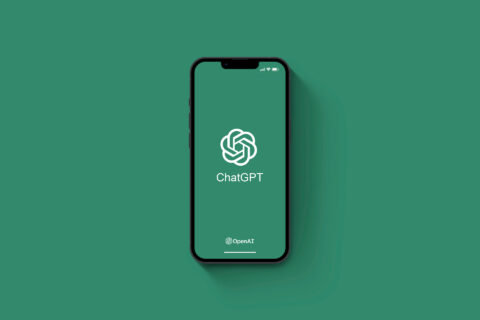Tech CEOs face a growing set of challenges that seem to escalate at the same pace as the rapid advancement of technology. One of these challenges is the competition, as new startups and emerging companies continue to vie for market share and attention.
In addition, B2B and B2C clients’ needs change rapidly, affecting customer loyalty and retention adversely. Other challenges that tech companies face include talent acquisition and economic downturns, among others. Any one of these challenges can hinder a tech company’s ability to survive or thrive.
However, despite the challenges, there are also innovations such as ChatGPT-4 that provide an inflection point as significant as the dawn of the Internet. These new technologies will change how businesses can succeed and overcome the challenges they face in the tech sector.
What is ChatGPT-4?
ChatGPT-4 is a natural language processing (NLP) model developed by OpenAI, a leading research lab in artificial intelligence. It is a state-of-the-art machine learning system that can generate human-like conversations using large-scale neural networks.
ChatGPT-4 can generate text or images, answer questions, provide recommendations, and carry out various other natural language processing tasks. Essentially, it can understand and generate human-like language and digital images, making it a powerful tool for a wide range of applications, including chatbots, customer service, content generation, and more.
Chatbots and conversational AI have seen significant adoption in recent years, with more and more businesses using these technologies to improve customer engagement and support.
8 Ways ChatGPT-4 Is Changing the Tech Industry
Now that you understand the context of how powerfully ChatGPT-4 can be applied for tech-driven business, here are eight ways it can be used to notably improve business functions, operations, and processes in the technology sector.
ChatGPT-4 can:
- Be used by software developers and programmers to develop mobile apps. However, human expertise is still required to fine-tune the user experience.
- Be used for software quality assurance, which takes up almost 80% of a developer’s time. ChatGPT-4 can debug code up to 10x faster than humans, thus reducing the time and effort required.
- Help security professionals improve onsite infrastructure, data center, and cloud security by generating breach and attack software simulations using ChatGPT-4, which helps them take preventive measures against adversarial attacks from cybercriminals, who use ChatGPT as a hacking tool.
- Increase efficiency and effectiveness of project management by researching best practices, improving methodologies, optimizing task delegation scheduling, and answering basic questions about budget, status, and timeline tradeoffs.
- Use predictive analytics to identify future market trends, competitive threats, and new business opportunities, making it an excellent tool for strategy and decision-making.
- Automate complex financial processes, reducing dependence on outside consultants to do the same.
- Provide automated customer support through chatbots, leveraging natural language processing and machine learning. Chatbots can understand and respond to customer inquiries, provide product recommendations, and troubleshoot common issues, helping businesses provide 24/7 support and faster response times, increasing customer satisfaction. Overall, ChatGPT-4 has the potential to revolutionize the way businesses operate and grow in the tech industry.
- Enhance content creation and provide targeted, personalized content and images to customers based on their individual preferences.
Potential Challenges and Limitations of ChatGPT-4
The effectiveness of ChatGPT-4 as an AI language model in B2B businesses is subject to various factors. One significant factor is the quality of data used to train the model. ChatGPT-4 heavily relies on data; the accuracy and effectiveness of its responses can be impacted if the data used is incomplete, inaccurate, or biased. Therefore, businesses must ensure that the data used to train ChatGPT-4 is of high quality to ensure its accuracy.
Another important consideration is the ethical implications of using ChatGPT-4 in B2B businesses. Using ChatGPT-4 may raise concerns about data privacy, transparency, and bias. As a result, businesses must ensure that their use of ChatGPT-4 is aligned with ethical and legal standards to prevent any negative implications.
“One significant challenge of using ChatGPT-4 in B2B environments is its limited understanding of context.”
One significant challenge of using ChatGPT-4 in B2B environments is its limited understanding of context. ChatGPT-4 may struggle to understand industry-specific terminology and technical jargon, leading to irrelevant or incorrect responses. Therefore, businesses must be cautious when integrating ChatGPT-4 into their existing systems and ensure that the model can understand their specific business context.
Integrating ChatGPT-4 into existing systems and processes may also pose challenges for businesses. ChatGPT-4 may require significant integration efforts that can be time-consuming and costly. Additionally, businesses must be aware of the dependence on technology that can lead to a loss of personal touch and human interaction, which may not be desirable in specific B2B scenarios.
Finally, the maintenance and updates can be a challenge for businesses with limited resources. ChatGPT-4 requires ongoing maintenance and updates to ensure its continued effectiveness and relevance, which may not be feasible for businesses with limited resources. Overall, businesses must weigh the benefits and challenges of using ChatGPT-4 and ensure that it aligns with their specific needs and goals.
ChatGPT-4 Will Revolutionize the Tech Industry, but Challenges Exist
The rapid advancement of technology has presented numerous challenges for businesses in the tech industry, including limited access to capital, fierce competition, changing customer needs, talent acquisition, and economic downturns. However, as discussed in this article, innovations such as ChatGPT-4 offer significant potential for overcoming these challenges.
ChatGPT-4’s capabilities in software development, quality assurance, security, project management, predictive analytics, financial processes automation, customer support, and content generation make it a powerful tool for businesses in the tech industry.
Nevertheless, businesses must also consider the potential challenges and limitations of ChatGPT-4, including data quality, ethical implications, limited understanding of context, integration efforts, and ongoing maintenance and updates. As such, businesses must weigh the pros and cons of implementation and ensure it aligns with their specific needs and goals. Overall, ChatGPT-4 has the potential to revolutionize the tech industry’s way of operating and growing, making it an exciting technology to watch in the years to come.
Ed Valdez is a Partner and CMO with Chief Outsiders, the nation’s largest and fastest-growing firm offering fractional Chief Marketing Officer services with Fortune 500 experience.
© YFS Magazine. All Rights Reserved. Copying prohibited. All material is protected by U.S. and international copyright laws. Unauthorized reproduction or distribution of this material is prohibited. Sharing of this material under Attribution-NonCommercial-NoDerivatives 4.0 International terms, listed here, is permitted.














